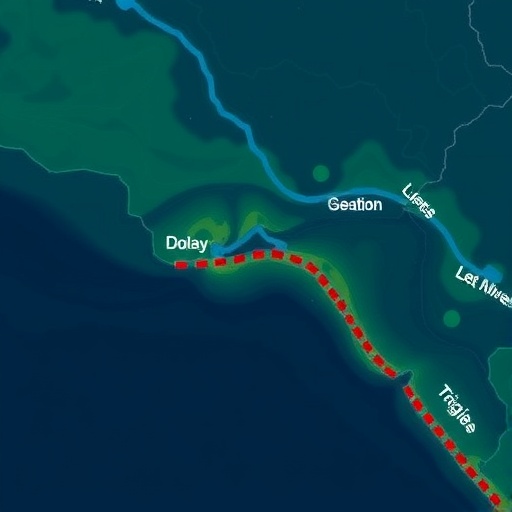In the ongoing quest for sustainable management of our nautical highways, the Dover Strait stands as a pivotal case study illuminating the application of Elinor Ostrom’s renowned governance principles. The strait, a critical maritime corridor, serves as a passage not only for cargo and passenger vessels but also for wildlife migrating between the North Sea and the English Channel. Yet this natural highway is fraught with challenges—from overfishing and pollution to conflicts over shipping routes. Understanding how Ostrom’s principles can be effectively applied to this waterway could pave the way for more harmonious uses of shared resources.
Ostrom’s principles of commons governance advocate for community-based management of shared resources to prevent the “tragedy of the commons,” where unregulated use leads to resource degradation. Applying these principles to the Dover Strait requires an intricate balance of interests—addressing commercial shipping demands while safeguarding the ecological integrity of the strait. This approach envisions a cooperative governance framework that encourages stakeholders to come together, fostering a sense of ownership and responsibility over the shared resource.
Central to Ostrom’s theories is the role of local knowledge and community engagement in creating effective governance structures. For the Dover Strait, stakeholders range from fishermen and shipping companies to conservationists and local communities. Creating a platform for dialogue among these groups can facilitate a deeper understanding of the strait’s challenges and opportunities. Engaging with local fishermen, for example, could provide invaluable insights into sustainable fishing practices that respect both economic viability and the environmental health of the strait.
Nevertheless, implementing such collaborative governance in the Dover Strait faces several obstacles, particularly in terms of regulatory frameworks. Existing maritime laws often prioritize economic interests over ecological sustainability, leading to conflicts that undermine governance efforts. By understanding the complexities of these regulations, stakeholders can work together to advocate for changes that incorporate ecological considerations into governance. A shared commitment to sustainability can foster innovative solutions that align economic activities with environmental stewardship.
Furthermore, technology plays a crucial role in enhancing governance in the Dover Strait. Advanced tracking systems and data analysis tools can provide real-time information on ship movements, fish stocks, and ecological conditions. This data can inform decision-making processes, guiding stakeholders towards sustainable practices. By leveraging technology to monitor activities, stakeholders can ensure compliance with agreed-upon governance measures, thereby maintaining the delicate balance between use and preservation of the strait’s resources.
In addition to local engagement and technological innovation, education and awareness-raising are essential components of sustainable management in the Dover Strait. Raising awareness among all stakeholders, including the general public, about the importance of conserving marine ecosystems can galvanize support for sustainable practices. Educational initiatives can promote understanding of the ecological significance of the strait and the interconnectedness of its resources, encouraging more responsible behaviours from maritime users.
A crucial aspect of Ostrom’s governance principles is the establishment of clear boundaries and rules tailored to the specific context of the resource in question. For the Dover Strait, this means delineating both the physical boundaries of the strait and the socio-economic rules governing its use. Involving local communities in the process of rule-making can enhance compliance and ensure that the governance structures resonate with the realities of their lived experiences. When people perceive rules as fair and relevant to their situation, they are more likely to adhere to them effectively.
Conflict resolution mechanisms are another cornerstone of effective governance in the commons. Given the multiple competing interests within the Dover Strait, establishing equitable processes for resolving disputes is necessary. Ostrom emphasized the need for adaptive governance systems that can evolve in response to changing conditions and conflicts. By creating flexible frameworks that accommodate the views and needs of various stakeholders, a more resilient governance model can emerge, fostering cooperation instead of competition.
As climate change continues to exert pressure on marine environments, the importance of adaptive governance becomes even more pronounced. The Dover Strait, like many maritime regions, faces evolving challenges such as rising sea levels, changing fish migrations, and increased shipping traffic. Establishing responsive governance mechanisms that can quickly adapt to these changes is vital for safeguarding the strait’s ecological integrity while ensuring the economic livelihoods dependent upon it.
Looking ahead, the prospects for implementing Ostrom’s principles in the Dover Strait hinge on sustained commitment from all stakeholders involved. While the challenges are significant, the potential rewards— a sustainable and thriving maritime ecosystem— are well worth the effort. Researchers, policymakers, local communities, and industry leaders must unite in a concerted effort to foster collaborative governance that honors both economic and ecological imperatives. By harnessing the shared wisdom and resources of these diverse stakeholders, the Dover Strait can become a beacon of sustainable maritime management.
In conclusion, the case study of the Dover Strait exemplifies the applicability of Ostrom’s commons governance principles to complex marine environments. While the journey toward sustainable navigation and resource management in the strait is fraught with challenges, it is also rich with opportunities for collaboration and innovation. Through mutual effort, education, and adaptive governance, we can ensure that this vital waterway remains a thriving conduit for both commerce and conservation for generations to come.
In summary, the path forward involves recognizing the interconnectedness of ecological health and economic activity, championing community engagement, harnessing technology, fostering education, and establishing adaptive governance mechanisms. The Dover Strait can not only serve as a critical shipping channel but also as an exemplar of sustainable resource management for all maritime straits globally.
Subject of Research: The application of Ostrom’s commons governance principles to maritime straits for sustainable navigation.
Article Title: Applying Ostrom’s commons governance principles to maritime straits for sustainable navigation: case study of the Dover Strait.
Article References:
Achmani, Y. Applying Ostrom’s commons governance principles to maritime straits for sustainable navigation: case study of the Dover Strait.
Discov Sustain 6, 1078 (2025). https://doi.org/10.1007/s43621-025-01878-3
Image Credits: AI Generated
DOI: 10.1007/s43621-025-01878-3
Keywords: Ostrom’s principles, commons governance, maritime straits, sustainable navigation, Dover Strait, stakeholder engagement, ecological sustainability, adaptive governance.




